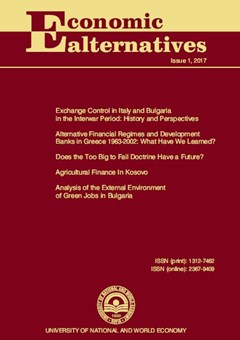Does the Too Big to Fail Doctrine Have a Future?
Author: Irina Petkova Kazandjieva-Yordanova
Abstract
The global financial crisis proved that the Too Big to Fail /TBTF/ doctrine is an issue which needs a solution. Currently, the solution is found in a number of regulatory measures undertaken on EU level directed to the systemically important banks. These measures in the field of supervision, resolution framework, protection of depositors and bank structures are discussed in this paper. The paper is structured in five sections – review of the TBTF issue, the enhanced supervision on systemically important banks in the euro area, the implementation of resolution mechanisms for the banks, the implementation of minimum required eligible liabilities /MREL/ and total loss absorbing capacity /TLAC/ for the global systemically important banks, the changes in the financial safety net, mainly the creation of the European Deposit Insurance Scheme, and the initiative for the banking structural reform. The reflection of each measure on the TBTF doctrine is analyzed in each section. The paper gives evidence that these regulatory initiatives undertaken on the EU level reduce the probability of bail out of systemically important banks due to the stronger intensity of banking supervision, increased loss absorbing capacity of the systemically important banks, decreased complexity in their structure and the creation of a stronger deposit insurance scheme on European level. These regulatory measures contribute to reducing the systemic risk and moral hazard which are associated with the systemically important banks and more options are provided for the policy makers except the bail-out of systemically important banks with public funds.

